The life capital of ASEAN Biodiversity Hero
The room was small, but not cramped. Every empty space had a reason to exist: books, maps, thick files with sticky notes, photos of the forest, photos of people standing in the forest, photos of the “Vietnam Heritage Tree” plaque installations. In the middle of it all was an old wooden table with a teapot still warm to the hand. Behind the teapot was him.
Professor Dang Huy Huynh is now at an age that people often call “rare”, but it is difficult to use the two words “old” to describe him. His eyes are still bright, his voice is still strong and steady.
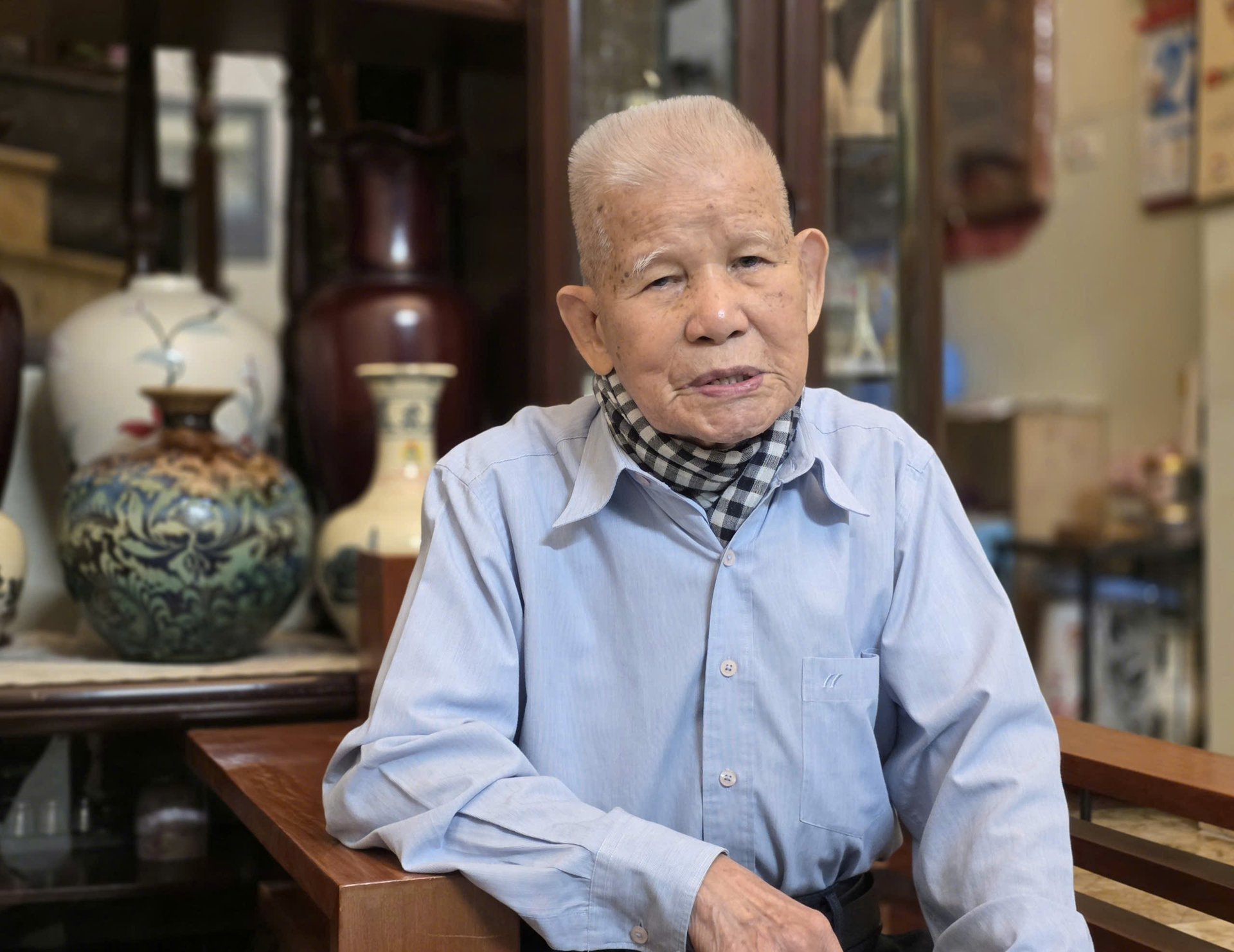
The simple life of a veteran scientist - Professor, Doctor of Science Dang Huy Huynh. Photo: Tu Thanh.
Prof. Dr. Dang Huy Huynh is not only known as a scientist. With many generations working in the field of environment and biodiversity, he is almost a symbol, a "big tree" in the industry. People call him by titles so long that they have to be written down on paper: Professor, Doctor of Science; Vice President of the Vietnam Association for Conservation of Nature and Environment; Chairman of the Vietnam Heritage Tree Council; Chairman of the Vietnam Zoological Society; ASEAN Biodiversity Hero... But if you listen to him, he only calls himself "a long-time forester".
He recalled his youth when he went to the Truong Son forest, crossed streams, climbed slopes, slept in hammocks, and ate wild vegetables: “I am grateful to the forest. The forest sheltered and nurtured me during the war, and after the war, gave me a path to pursue science.”
At his age, many people have stopped. As for him, people still see him climbing mountains, wading streams, attending field trips, and Heritage Tree recognition ceremonies in remote villages and islands... He said that positive energy is the only thing he intentionally "sows" to everyone. He does not like to complain, does not like to recount his achievements, and even less does he like to be seen as a "living witness" in the style of being displayed. When talking, he always talks about the common good, about the country, about the industry, about the people. He rarely mentions himself.
But what he did was too specific to be modest.
His entire scientific career has been closely linked to the land, forests, natural resources and biodiversity conservation of Vietnam. He is the co-author of major works such as the National Atlas, the Fauna and Flora collections, the Vietnam Red Book... These contributions brought him two Ho Chi Minh Awards - the most prestigious scientific award in Vietnam for science and technology, along with many Vietnam Environment Awards, certificates of merit for outstanding achievements in biodiversity conservation activities...
In 2017, when ASEAN celebrated its 50th anniversary, he was honored as an ASEAN Biodiversity Hero – one of the very few people in the region to be recognized at that level. When he heard about this, he just smiled: “That is a general recognition for the efforts to protect the natural resources of my country, not just my own.”
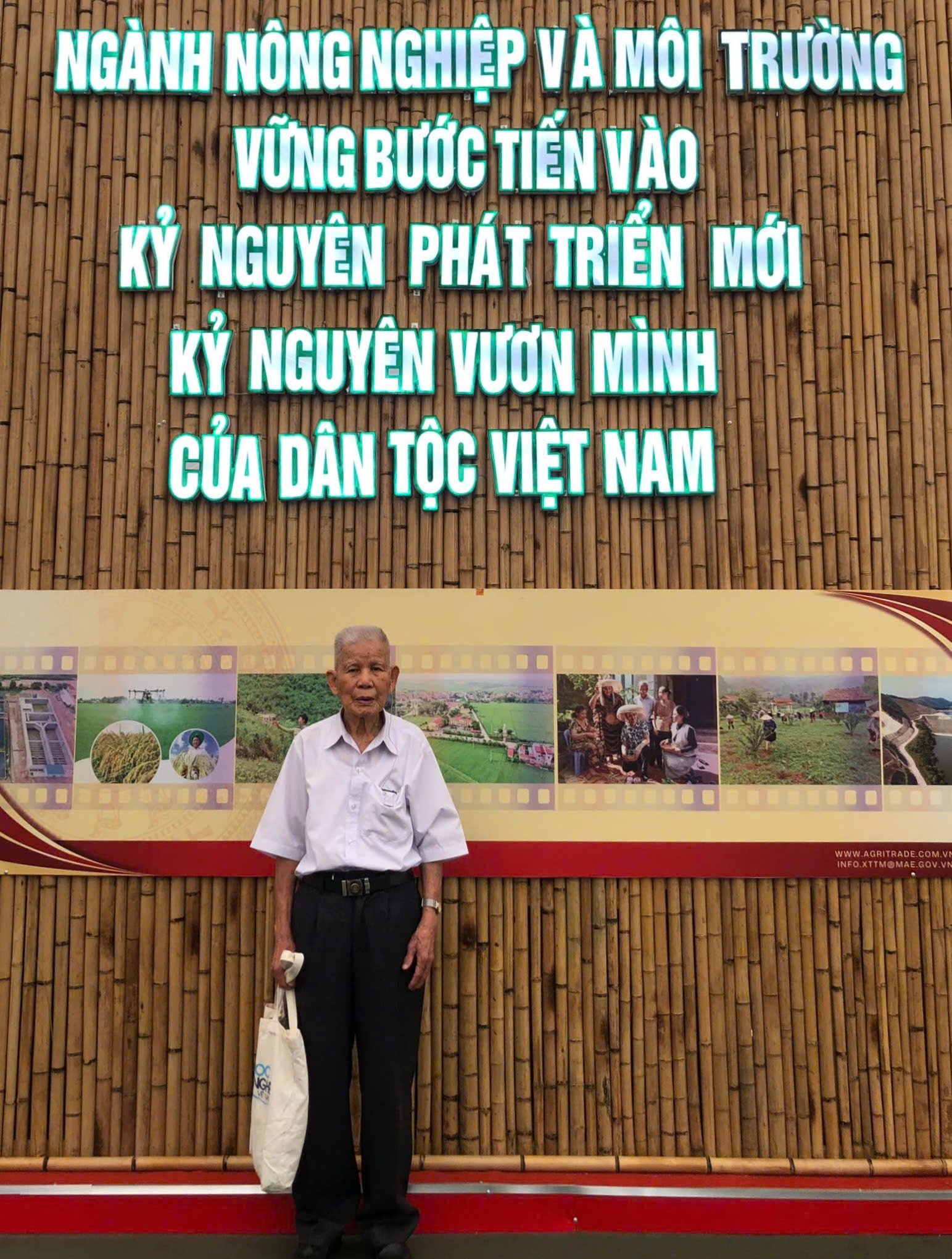
Prof. Dr. Dang Huy Huynh visits the exhibition area of the Ministry of Agriculture and Environment at the National Exhibition Center. Photo: Provided by the character.
The day we met, he showed me a new photo. In the photo, he was standing next to the exhibition area of the Ministry of Agriculture and Environment, the Ministry of Science and Technology, where scientists with special contributions were introduced at the National Exhibition Center. He said: "It is also fortunate that at this time, we consider agriculture, the environment, natural resources, biodiversity... as an inseparable part of development."
The statement opened up a whole new space. Because, everything he was about to say next was not just his own story, but the story of 80 years of building the Vietnamese Agriculture and Environment sector.
Agriculture and Environment: 8 decades of comprehensive transformation
Over a pot of tea in his living room, he talked about the joy and responsibility on the occasion of the 80th anniversary of the Vietnamese Agriculture and Environment sector. He was excited when talking about a long journey full of hardships, but also full of glory. Now, after 8 decades, Vietnamese agriculture not only ensures food security but also becomes a bright spot in the world's agricultural export. "After the August Revolution, our people were always poor and hungry, but under the leadership of the Party, hundreds of millions of people no longer suffer from 'starvation'. Now, Vietnamese rice has been in the top group of exports for many years, many agricultural products have made their names known in the world, spreading the name of Vietnam across the global agricultural map", shared Prof. Dr. Dang Huy Huynh.
The 80th anniversary of the August Revolution and National Day September 2 (1945-2025), marking a period of continuous development of the Vietnamese Agriculture and Environment sector, the pillar of the economy, the foundation of social security and sustainable living environment, for him is not just a solemn occasion. He called it “a real joy for the Vietnamese people. I am very proud. Not only me, everyone is proud”.

Prof. Dr. Dang Huy Huynh (standing in the middle) met with leaders of the Ministry of Agriculture and Environment and experts in the field of agriculture. Photo: Provided by the character.
He recalled the time when the country had just gained independence, when Uncle Ho said that we had to fight three enemies: foreign invaders, hunger, and ignorance. At that time, hunger was not a policy concept. Hunger meant not having enough rice in the house. “For nearly a hundred years of colonial rule, our people were poor, hungry, and hard-working. The land was the same, the water was the same, the forests were the same, but people did not have enough to eat or wear. But after the August Revolution, from a primitive agriculture, we gradually built an agriculture that was both suitable for ecological conditions and oriented towards modernity. That was a huge change in thinking, innovation in thinking and doing,” he said.
Then he tapped his fingers on the table following each idea, as if counting: The first achievement, according to him, is that Vietnam has escaped chronic hunger. “Up to now, hundreds of millions of Vietnamese people are no longer as hungry as before. They may still be poor, but they are no longer hungry. Not only do we have enough to eat, we also have surplus food for export. In recent years, Vietnam has been one of the leading countries in exporting rice, then products from industrial crops, fruits, seafood... That means from fighting hunger, we have moved to getting rich through agriculture.”
According to him, the second achievement is to liberate the labor of farmers. “In the past, people 'sold their faces to the ground, sold their backs to the sky', their feet and hands were covered in mud, and they had to go to the fields even in storms. I witnessed it, and the memories of mud, hunchbacks, and storms are still there. But now, in most rural areas, plains, and even mountainous areas, people use machines and apply mechanization to production. Advanced technology helps people suffer less. That is a huge change.”
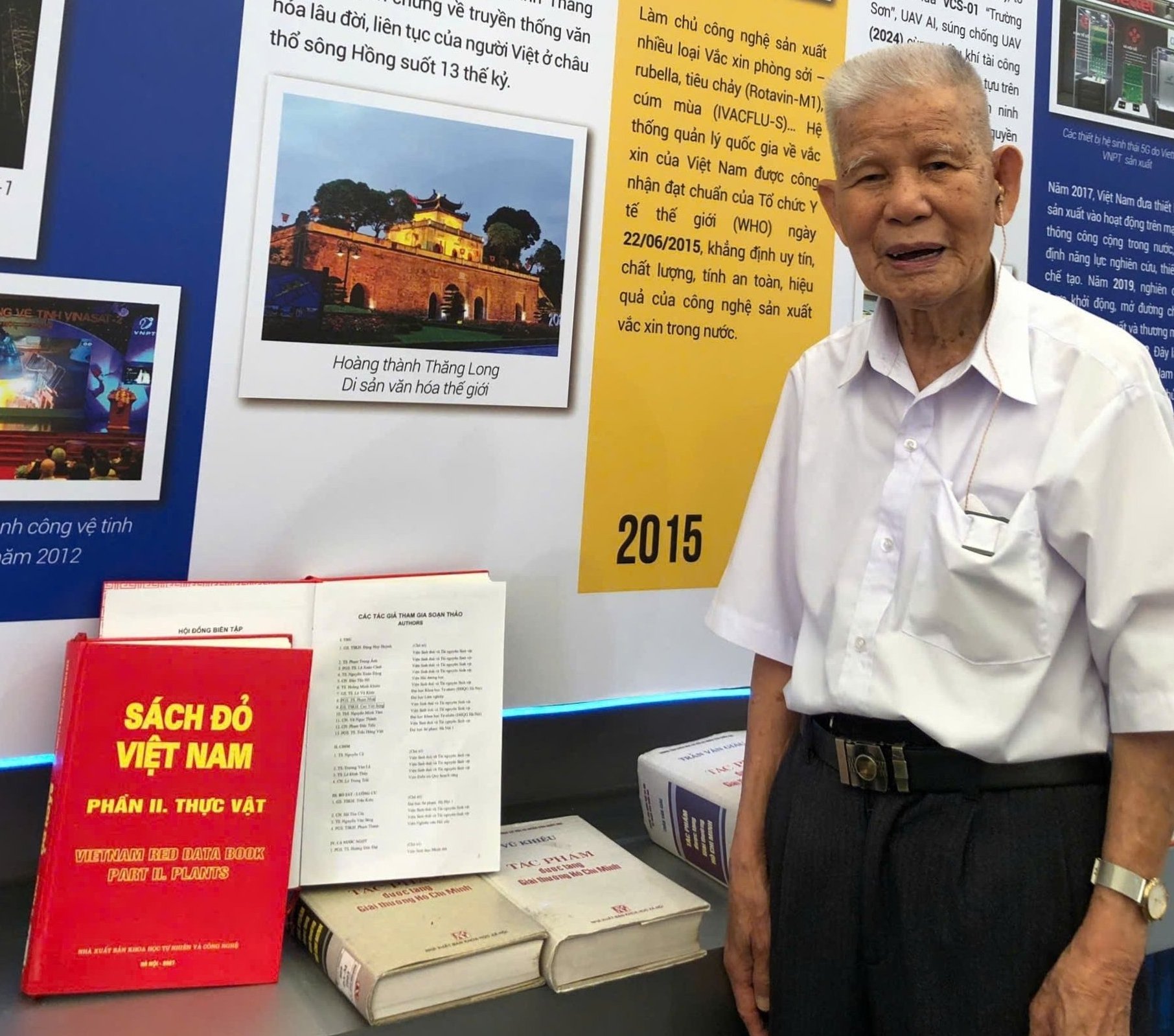
Professor, Dr. Dang Huy Huynh is one of the first people to compile a set of books on fauna, flora, red books, and red lists of Vietnam. Photo: Provided by the character.
The third achievement, according to him, is the transition from the old agricultural style to ecological agriculture, circular agriculture, green agriculture, low carbon and moving towards carbon storage. “That means we gradually abandon the production style that is harmful to the environment. We move towards both production and protection of the ecosystem. Even very new technologies such as artificial intelligence applications are now being applied in the fields of agriculture and the environment.”
And the fourth achievement is the position of Vietnamese agricultural products. “Currently, our country’s agricultural products are present in nearly 200 countries. Vietnam is among the top 15 countries in the world in agricultural exports, and ranks second in Southeast Asia. Rice, fish, and clean fruits exported abroad are not only goods, they also carry Vietnamese culture, a culture of loving nature, appreciating nature, preserving and nurturing nature.”
Only take profit, not eat into capital
But for a scientist like him, nothing moves him more than the story of the forest…
He sat up straight when he talked about the forest.
He repeated a number he knew by heart: In 1943, during the French colonial period, people measured the forest cover in Vietnam at about 43%. “More than 80 years have passed, through war, bombs, toxic chemicals, deforestation, slash-and-burn farming..., yet by 2025, our forest cover has recovered, back to more than 42%, specifically 42.03%”.
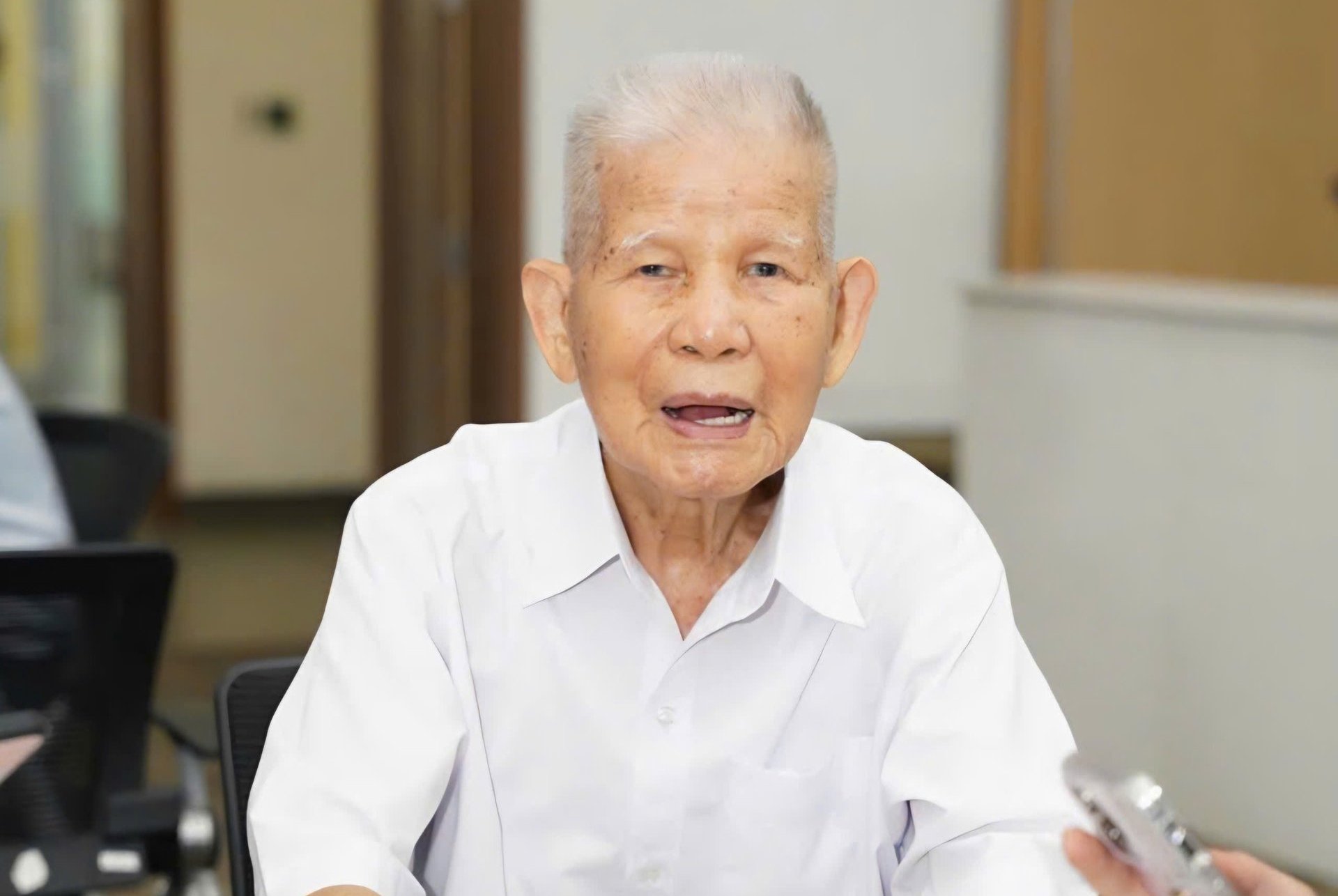
Professor, Dr. Dang Huy Huynh shared: "Resources are capital, we can only use them for profit", emphasizing conservation and development. Photo: Provided by the character.
Then he read out a huge system of numbers as if reading a family tree. He looked up at me: “That is the capital of the country, not just trees.”
Forests, according to him, are a soft but strong line of defense for Vietnam's future, contributing to stabilizing agriculture, preserving land and water, adapting to and minimizing the impact of climate change; creating a carbon market and directly contributing to the commitment towards net zero emissions by 2050; being a shield against storms and floods, a livelihood support for communities; and the foundation for the system of nature reserves.
He proudly recounted that over the past 80 years, the Agriculture and Environment sector has built a massive conservation network with 178 nature reserves, including 34 national parks, 56 nature reserves, 14 species and habitat conservation areas, 54 landscape protection areas, 12 biosphere reserves, 10 Ramsar sites and 10 ASEAN gardens.
He sees it as a sign of a change in resource management thinking: from just exploitation, now we are moving to “smart exploitation”, which means both using and preserving, considering natural resources as a natural capital that must be preserved. He speaks slowly and clearly: “Resources are capital. We are only allowed to use the profit. The capital must be left for our children and grandchildren. If we eat into the capital, what will the next generation have to live on?”
Professor Dr. Dang Huy Huynh continued to tell about a huge treasure that Vietnam has currently recorded about 51,400 species of organisms distributed on land, in the sea, and in wetlands. Vascular plants alone have about 11,900 species, and low-level plants about 4,528 species. Terrestrial wildlife is about 25,031 species. Marine life is about 11,000 species. There are about 7,500 strains of microorganisms, 1,100 species of freshwater fish, 2,038 species of marine fish, and 12,500 species of insects.
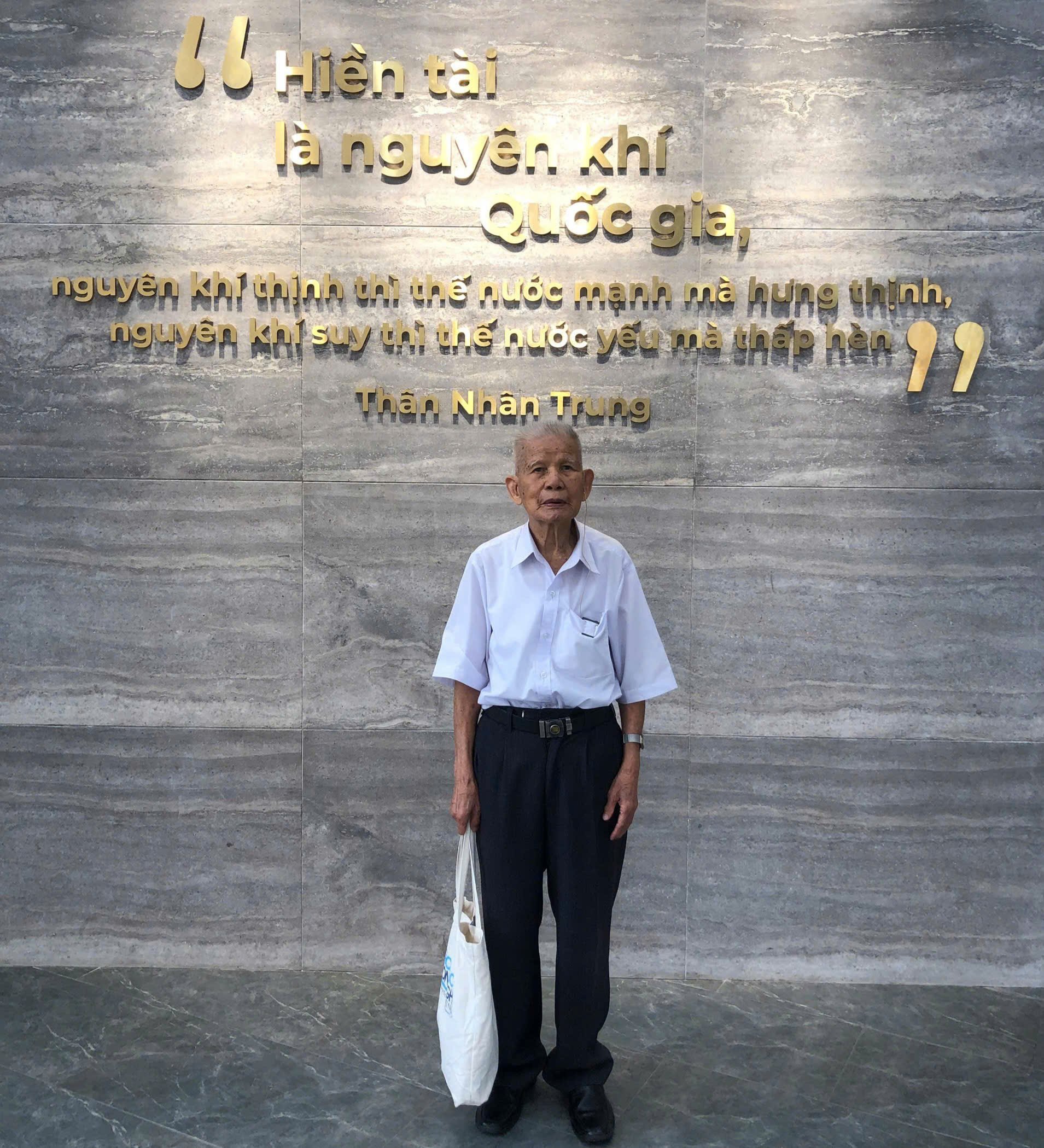
Professor Dang Huy Huynh shared that he really appreciates Than Nhan Trung's quote which is quoted on the wall of a university. Photo: Provided by the character.
He always reminded that each species has its own ecological function, and losing one species would destabilize the entire ecosystem. He talked about the animal traps spread thickly in the forest, about the nets that exterminate wild birds, about the rows of bird cages sold along the national highway, about the pubs advertising “wild birds, wild animals”. He worried: “If it continues like this, how will nature have room to breathe?”
He put the issue very straightforwardly: biodiversity conservation cannot be separated from the local community. We cannot just hang slogans like “no logging” or “no hunting” without paying attention to the lives of the people. He said: “Currently, around the forest are about 25 million people, that is, 1/4 of the country’s population. People live thanks to the forest, their livelihood depends on the forest. If we want the forest to survive, we must let people live from protecting the forest. We must consider them as the subject, not as the object of management.”
His point of view is to contract out forest protection so that people can both earn income and be responsible. More attention should be paid to building forest livelihood models such as eco-tourism, sustainable harvesting of forest products, growing medicinal herbs under the forest canopy, processing clean agricultural and forestry products, etc. so that people can "get rich from the forest while still preserving the forest".
Hearing him say this, I suddenly remembered the verse “The country of the people, the country of folk songs and myths”. In his opinion, all the policy systems and great strategies ultimately come back to that: of the people, by the people, for the people. He said: “Resources belong to the people. Development is also for the people. Only then can we mobilize all our strength”.
Heritage Trees: When people take control of conservation
When the story seemed to have gone full circle in agriculture and the environment, he slowly returned to what he was passionate about: Vietnam Heritage Trees.
He said that after retiring 30 years ago, he still refused to sit still. “I think it’s very simple. I was properly trained by the Party, the State, and the people, and when I am old and weak, I must try to contribute something. Even if it is small.” And the “small” thing he chose was to preserve ancient trees.
To him, talking about trees is also talking about people. Each ancient tree is a witness to the history, culture, beliefs and ecological identity of each village and commune: there are trees in the communal house yard, there are trees next to pagodas, there are trees clinging to high mountains and deep forests, there are trees standing on remote islands providing shade for soldiers.
From that perspective, he and other professors, doctors, and scientists at the Vietnam Association for Conservation of Nature and Environment proposed to establish the Vietnam Heritage Tree Council, develop a set of strict and specific criteria for recognition of the tree's scientific name, determine the tree's age, circumference, diameter, height, and cultural, historical, social, and educational values of the tree... to awaken awareness of protection.
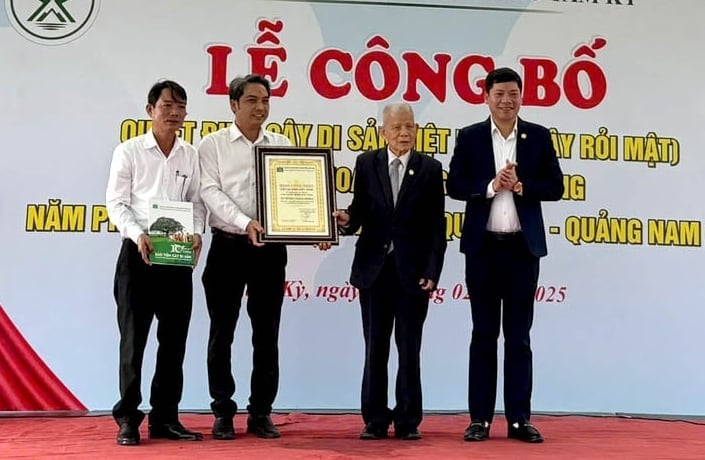
Prof. Dr. Dang Huy Huynh presents the Certificate of Recognition of Vietnam Heritage Tree in Quang Nam province. Photo: VACNE.
Since 2010, the Vietnam Heritage Tree Council has surveyed, documented and submitted for recognition more than 8,500 heritage trees in 34 provinces and cities across the country. He said: “The most valuable thing is that the movement comes entirely from the community. People register and propose to protect their village trees. We only confirm and put up plaques.”
In his memory is a whole map of emotions: from the capital Hanoi, where there are still rows of ancient trees hundreds of years old, to high mountains like Fansipan; from the Central Highlands with pơ-mu forests with thousands of trees, of which more than 1,600 trees have been recognized as "heritage tree populations"; to the islands outside Truong Sa, where the banyan and phong ba trees over 300 years old not only provide shade but also serve as landmarks affirming the enduring presence of Vietnamese people on the islands.
He slowly told the story when mentioning the two tau trees in Thien Co Mieu (Viet Tri, Phu Tho), which are more than 2,200 years old, associated with the story of the teacher who taught the daughter of the 8th Hung King. When the teacher passed away, people built a tomb and planted trees next to the tomb to commemorate him. Two millennia have passed, the trees are still standing there, spreading their shade. “Protecting Vietnam’s heritage trees is not just protecting trees. It is protecting the beautiful culture of Vietnamese people everywhere.”
He looked back on that journey and called it a contribution to the Agriculture and Environment sector. Because there, trees are not just trees. They are also the spiritual space of the community. Trees are also very specific tools to cope with climate change: the canopy softens heavy rains, slows down water flow, and prevents flash floods; the trunk creates wind resistance; the roots hold the soil and nourish groundwater.
And from the tree he returned to man.
He repeatedly mentioned the role of the community. Protecting forests, conserving biodiversity, managing wildlife, combating poaching, reducing environmental pollution… all cannot be successful if people are not recognized as subjects, if they do not share legitimate benefits from resources. He said that is also the spirit of the benefit-sharing provisions in the Convention on Biological Diversity, those who protect resources must benefit from resources, but in a sustainable way. “You can only take the profit, not the capital,” he repeated.
At the end of the conversation, he clasped his hands together, looking out at the small alley in front of his house as if looking through many layers of time. He talked about faith. That after 80 years, the Agriculture and Environment sector has gone from “fighting hunger” to “getting rich by following nature”. That the management mindset is now different: the management mindset has shifted from paperwork to evidence at the grassroots level, from purely exploiting to preserving for development, from considering biodiversity as the business of a few scientists to considering it as a strategic asset of the nation.
Source: https://nongnghiepmoitruong.vn/gstskh-dang-huy-huynh--cay-di-san-viet-nam-d781434.html



![[Photo] Deep sea sand deposits, ancient wooden ship An Bang faces the risk of being buried again](https://vphoto.vietnam.vn/thumb/1200x675/vietnam/resource/IMAGE/2025/11/13/1763033175715_ndo_br_thuyen-1-jpg.webp)






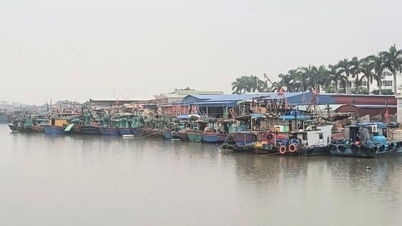
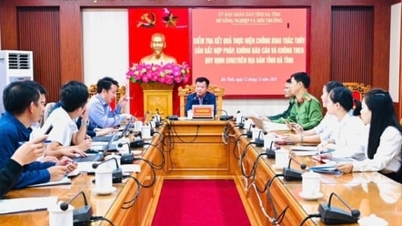
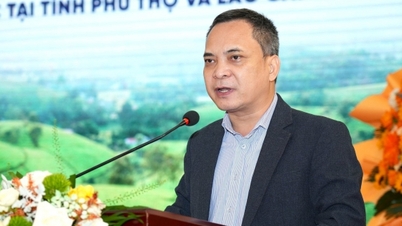





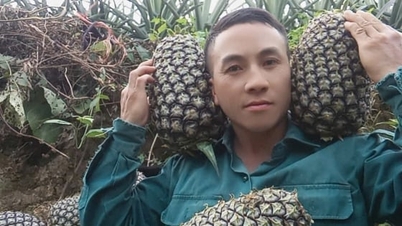
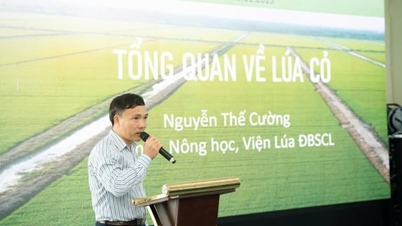
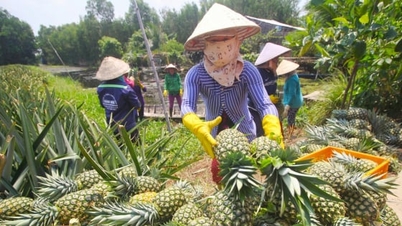
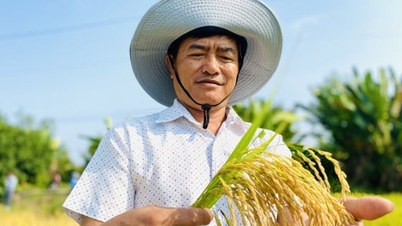
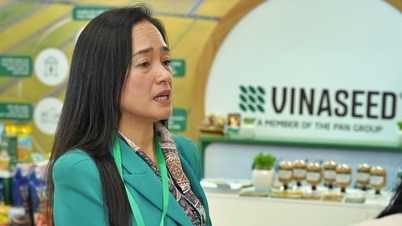










































![[Photo] Panorama of the 2nd Vietnam-Cambodia Border Defense Friendship Exchange](https://vphoto.vietnam.vn/thumb/402x226/vietnam/resource/IMAGE/2025/11/13/1763033233033_image.jpeg)
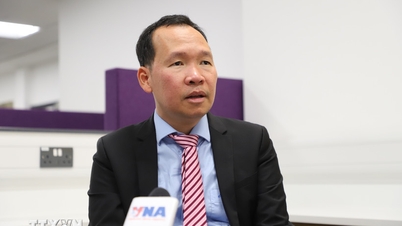


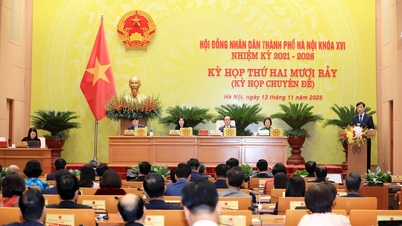


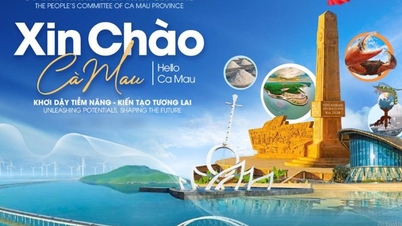
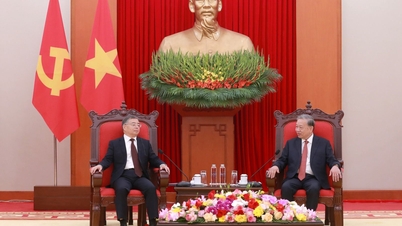
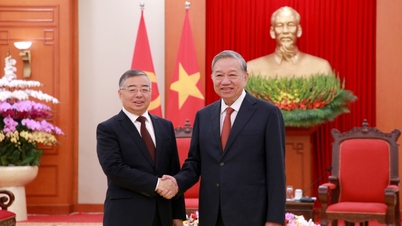


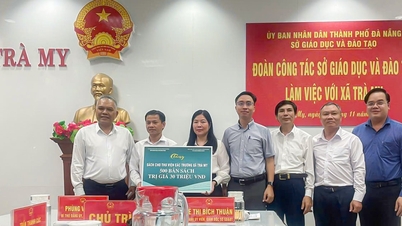





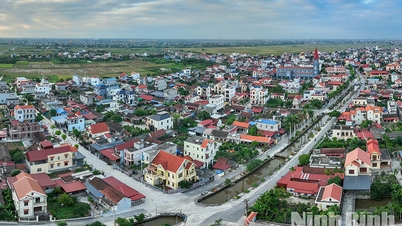

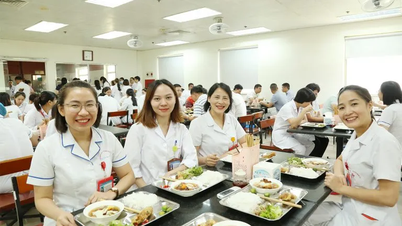





![Dong Nai OCOP transition: [Article 3] Linking tourism with OCOP product consumption](https://vphoto.vietnam.vn/thumb/402x226/vietnam/resource/IMAGE/2025/11/10/1762739199309_1324-2740-7_n-162543_981.jpeg)




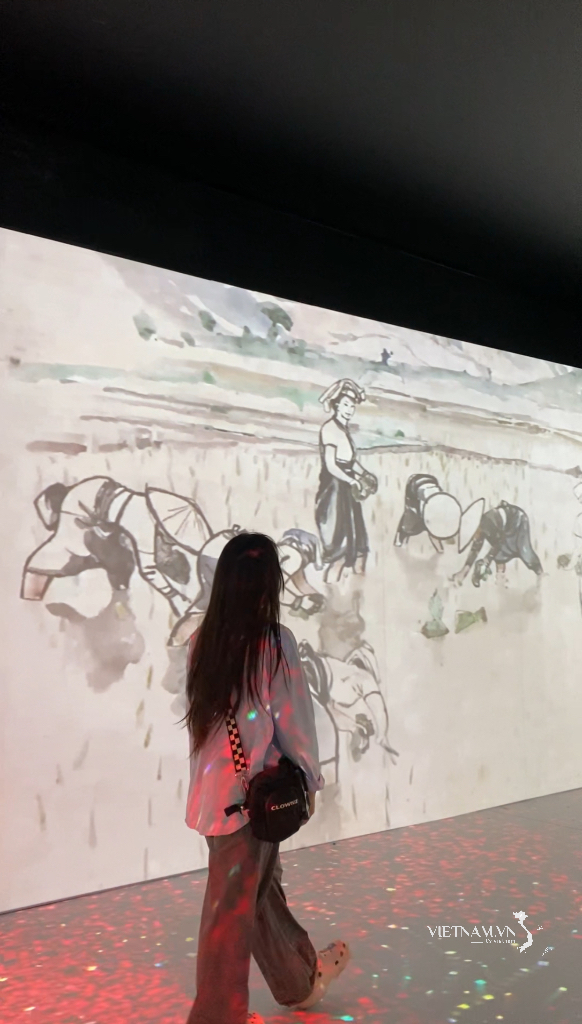

Comment (0)